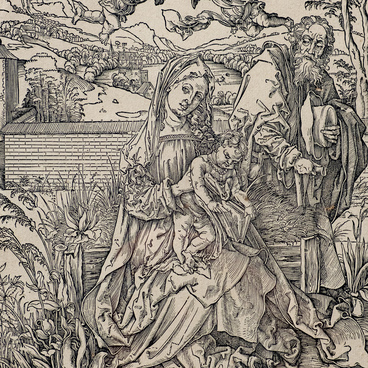The collection of the Sakha Republic National Art Museum contains an engraving by the outstanding French draftsman and engraver Jacques Callot (1592–1635) “The Two Pilgrims” from the series “The Beggars.”
The sheet shows a close-up of two men in long robes and wide-brimmed hats with long staffs talking against the backdrop of an urban landscape in the distance. The composition is made with exceptional sharpness and vigilance in depicting aptly found poses, gestures, and facial expressions of each character. The combination of various scales, the perfection of the smallest details and aerial perspective lets Callot within a small sheet juxtapose large figures of men and a distant panorama of the urban landscape with streets filled with numerous figures of people. In the depiction of the characters, virtuoso drawing is combined with acute observation. Using the example of the presented sheet, it is possible to highlight the features of Callot’s artistic method in the series “The Beggars”: grotesque magnification, complex foreshortening of foreground figures, sharp perspective reduction of space, inexhaustible imagination, and ease of execution.
During his life, Jacques Callot created over 1,500 engravings. His style was greatly influenced by the Italian theater Commedia dell’arte. The grotesque comic characters of this theater and street observations were embodied in the artist’s series “The Capricci” (1617), “The Hunchbacks” (1622–1623), and “The Beggars” (1622). Callot’s discovery was the introduction of the “capricci” genre into art (Italian: capriccio — caprice) depicting everything strange, bizarre, and unusual. A close genre is the grotesque. Callot’s work is filled with a sense of social disadvantage, and the artist often focuses on declassified characters: actors, buffoons, beggars and vagabonds.
Jacques Callot worked at the turn of the epochs:
the late French Renaissance, Italian Mannerism and the “new Baroque
spatiality.” Jacques Callot’s first mentor was Claude Henriet II. Later he
studied in Rome under the engravers Philippe Thomassin and Antonio Tempesta,
worked under Giulio Parigi at the court of Cosimo II in Florence, then returned
to his homeland. Having mastered the etching technique in Italy, Callot
invented the technique of re-etching and improved the technique of stroke
etching by introducing “hard varnish” and multilayer etching of a printed
board.



